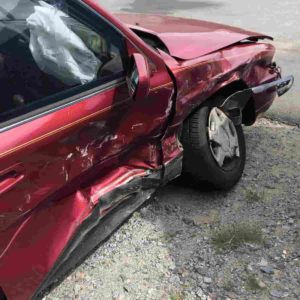 Car accidents are so unexpected that it’s only natural to look outside the vehicle for something or someone to blame. Although most crashes are caused by driver errors, defective auto parts certainly play a role in their fair share of collisions.
Car accidents are so unexpected that it’s only natural to look outside the vehicle for something or someone to blame. Although most crashes are caused by driver errors, defective auto parts certainly play a role in their fair share of collisions.
The National Highway Traffic Safety Administration (NHTSA) estimates that vehicle factors, including defects and malfunctions, played a role in 44,000 accidents between 2005 and 2007.
After a serious wreck – no matter the cause – it is likely that someone will end up in the hospital and possibly sidelined from work during recovery. The costs can add up quickly, but who is responsible for paying the damages if a defective auto part was to blame?
The First Step: Prove the Defective Part Caused the Accident
The first step in recovering compensation after an accident due to a defective auto part is showing that the part was defective to begin with. This involves understanding how your vehicle was designed to operate and what went wrong. In most cases, it is wise to hire a personal injury attorney to assist with these claims because a seasoned lawyer will have access to auto parts specialists who can review blueprints, schematics, crash test results, and recalls.
The Second Step: Identify the Liable Party
The second step is identifying who might be responsible for the defect. A defect can occur at any stage of the design, manufacture, or distribution of a product. The specific cause of the defect will determine who might be liable for damages. Potentially liable parties include:
- The designer of the part;
- The manufacturer of the part;
- The company that distributed or sold the part;
- A mechanic who installed the defective part; or
- Another party that played a role in the design, manufacturing, or distribution of the part.
A thorough investigation will most likely be needed to find out how the liable party’s negligence led to the defect. In certain states, product liability claims fall under “strict liability,” so the victim may be able to recover compensation even if negligence was not a factor in the case contributing factor.
The Third Step: File a Claim
After you identify the party who is liable for your damages, your next step is to file a claim. Depending on the facts of your case, you may be able to recover compensation for lost income, hospital bills and other medical costs, pain and suffering, emotional distress, and other damages.
Filing a product liability claim is a complicated process, and it is almost never a good idea for a victim to bring the claim without the help of an attorney. Your lawyer not only can gather evidence and bring in the necessary expert witnesses but can also calculate your damages so your claim includes all potentially recoverable losses.
Defective Parts Can Exacerbate Injuries and Property Damage
Even when a defective part is not the root cause of a crash, it may exacerbate the injuries and property damage. For example, there have been several well-publicized cases of SUV drivers suffering head and neck injuries after their cars rolled over and landed on the roof.
In these cases, it may be possible to claim that the vehicle had a dangerous propensity to flip over in certain circumstances due to a negligent design. Victims may also contend that the roof provided insufficient protection against the weight of the car, or the vehicle manufacturer’s collision safety tests were inadequate.
How Safe Is Your Vehicle?
Auto manufacturers have a responsibility to issue a recall for vehicles that have known defects. To check if your car has safety issues that need to be repaired, enter your Vehicle Identification Number (VIN) on the NHTSA recall website.
